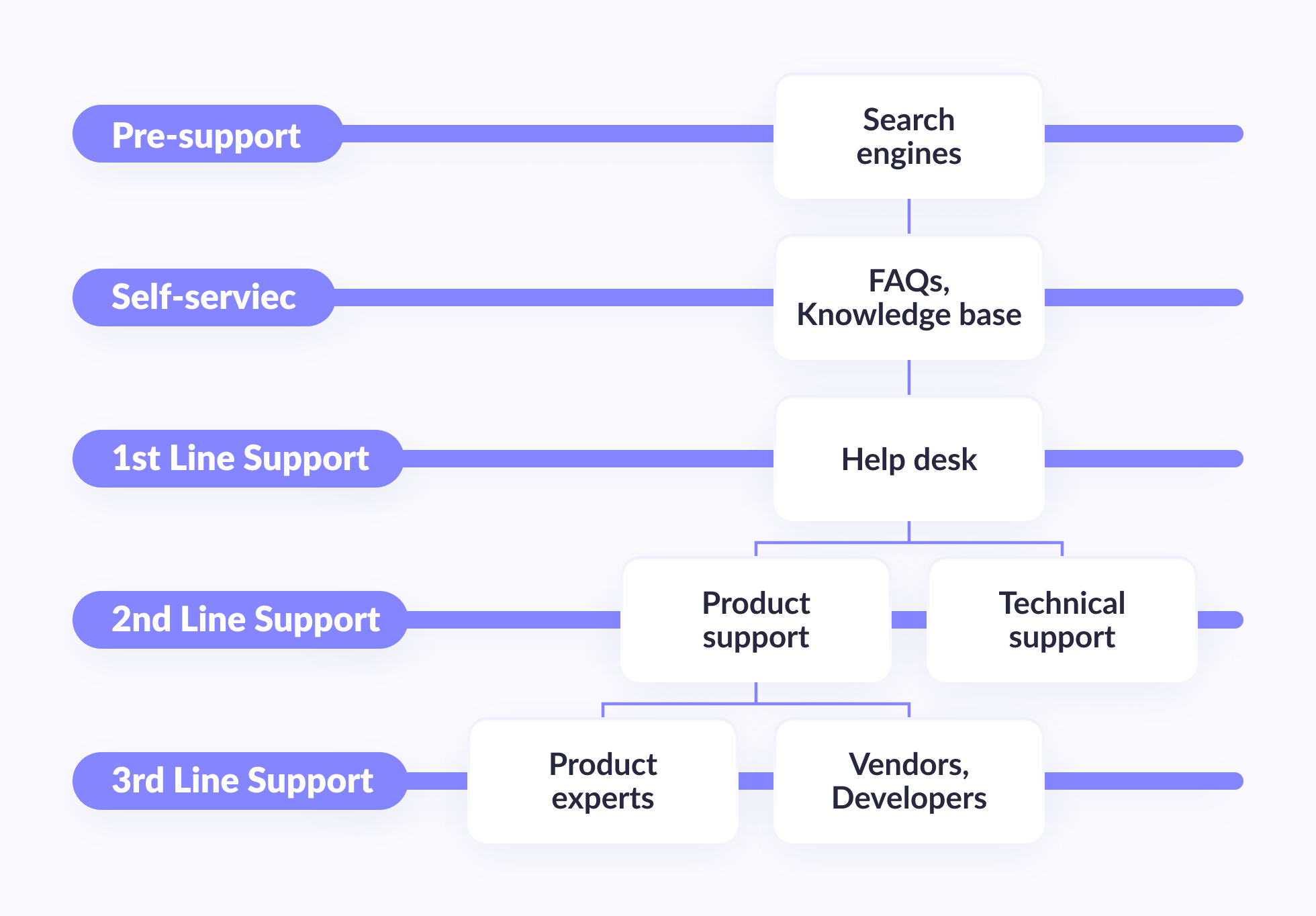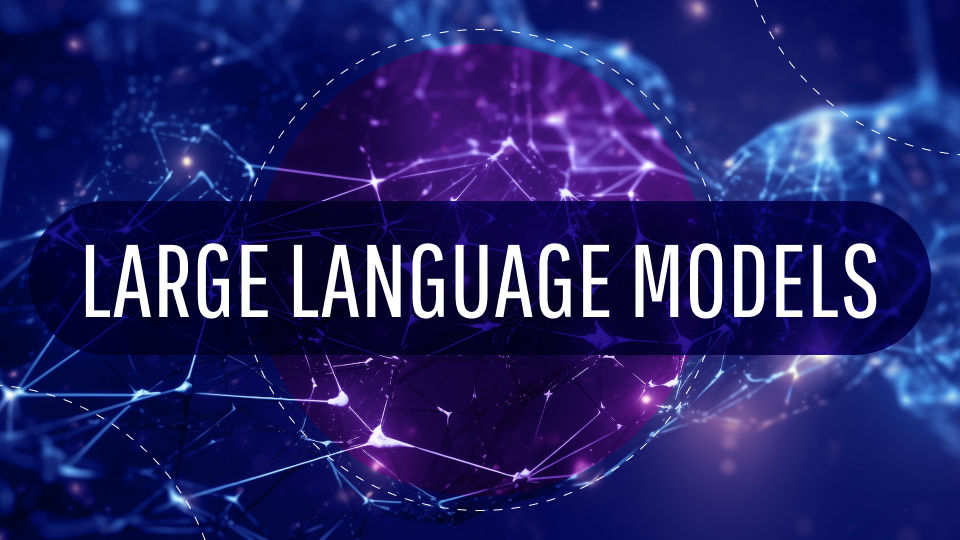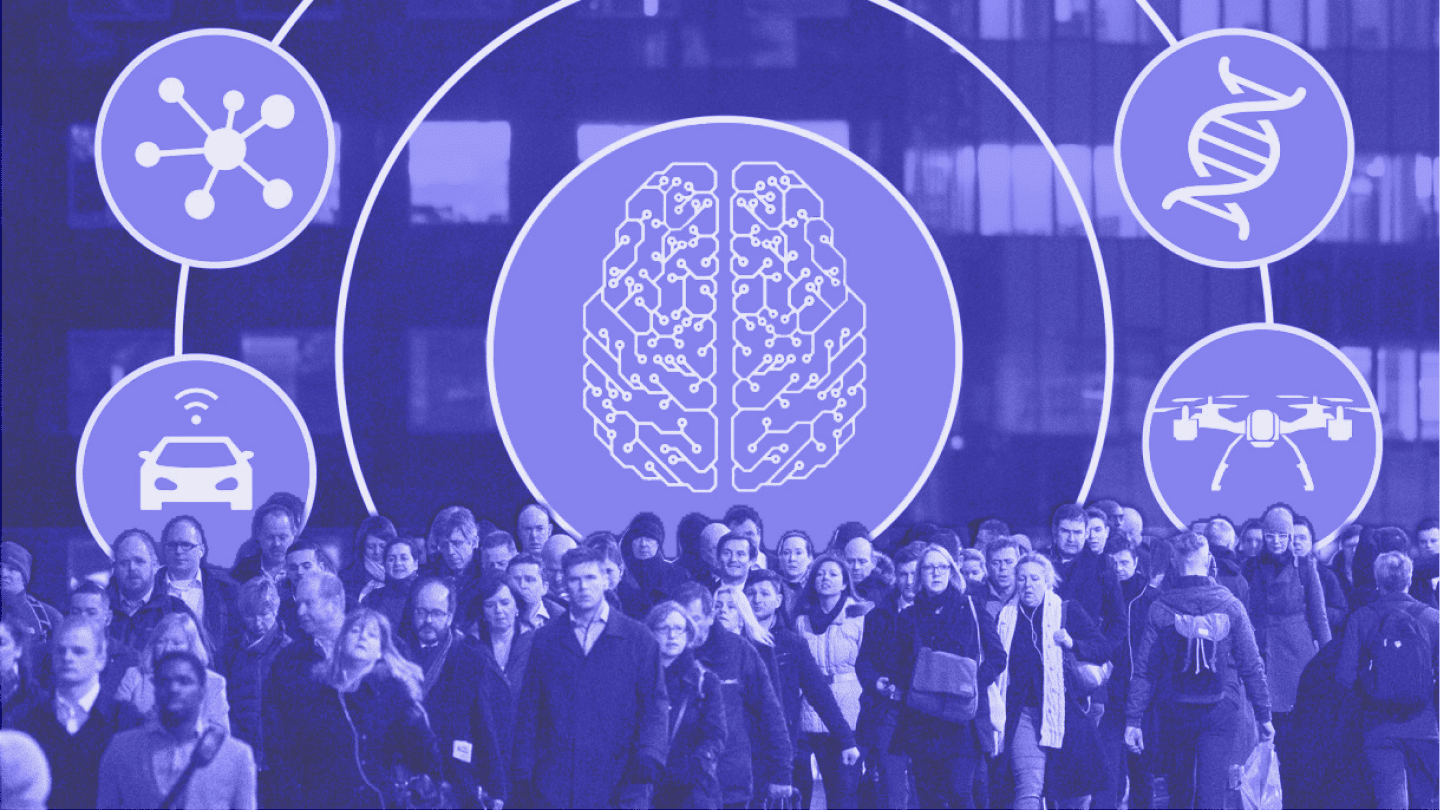The world is changing. The world is becoming more mobile and "fast". Sophisticated technical tools penetrate the lives of ordinary people and ordinary businesses. Support is closely associated with the manufacturer of software products and equipment or project executors (for example, the development and further maintenance of the platform), which helps users correctly configure and operate a complex product and quickly configure and operate a complex product to troubleshoot emerging customer issues. In this article, we will talk about what the technical support service is, the main support tiers, and the support system structure.
In this article:
What is Technical Support?
Technical support is a service where users of a product or service can apply for support in solving a technical issue that has arisen and for additional support technical information on an issue of interest. It is also worth noting that a technical support service can also be organized to service the company personnel within the organization, for example, if employees need technical assistance with computer equipment (a computer/printer has broken down) or non-working software. You can single out vendor software support separately. This type of support has a strategic focus, and it aims at building long-term relationships with clients.
Usually, support technicians provide 3 IT support levels. It is considered to be that there are three lines. Today we will take a closer look at each of the lines in order.

Why do you need Tech Support?
First, you need to determine what tasks a unit is responsible for. For example, these are internal services for maintaining its IT infrastructure. Another option — when the tiered technical support acts as a means of after-sales service for external customers. In general, the support service tasks can be divided into three blocks.
They are receiving and fixing service desk requests, and troubleshooting customer issues. You should not take the very concept of "problem" narrowly. We can discuss eliminating incidents in equipment operation or services: breakdowns of office equipment, unstable Internet connection, hardware and software failures, etc. Technicians also handle service requests. These are applications for setting up a computer, providing access to applications, preparing a workplace for a new employee, and much more.
One way or another, any user request should be taken into work and carried out in strict accordance with the established deadlines. The global goal of all tech support levels within the company is to eliminate any downtime in the activities of employees and improve customer experience in general.
You get collected feedback. This task is usually carried out by dispatchers (first-line tiered technical support specialists). To a greater extent, this applies to servicing external customers. In mutual communication, technical support staff receive much helpful technical information (including help desk support), which serves as a starting point for improving products and services, expanding the functionality of proposed solutions, etc.
It increases customer loyalty and improves customer experience. Today, it is one of the critical indicators that determine the success of a business. According to experts, companies with the highest consumer loyalty ratings increase profits three times faster than their competitors. The quality and speed of elimination of technical problems have a direct impact on this parameter. Moreover, in the B2B sphere, fast service of all levels of technical support often turns out to be the main competitive advantage of solution and service providers.
Moreover, it is no longer enough to "extinguish" individual incidents or satisfy service requests as needed. Ideally, the service desk should build a long-term and mutually beneficial relationship with the client. This is a strategic work in which the technical and the communication side of the issue is essential. It is necessary to provide the client with critical information, support them at all stages of interaction, and refine your products and services based on the real needs of users.

By the way...
What Is Legacy Code: Working With Legacy Code
Did you know that legacy code could be dangerous to your business? Do not let it chain you on your way to market leadership. Fight back with Geniusee!
Let's seeIT Support Levels (tiers)
What is Level 0 Support?
The main function of tier 0 is to maintain contact with the client and sometimes psychological support if the client overreacts to the problem. Level 0 technical support line is usually the most numerous. As a rule, the level 0 line accepts user requests, filters out non-core tasks (if the client applied to the wrong address), clarifies and classifies the remaining ones, and then distributes them among the performers.
From the company's point of view, level 0 support makes it possible not to waste the time of qualified technical specialists on banal phone calls. Taking into account the cost of such specialists in the labor market, the company spends the payroll more optimally in the presence of a dedicated zero line. Yes, and job satisfaction for technicians is higher if they do not need to interrupt to answer phone calls constantly.
It is also the task of zero-line specialists to keep customers informed about the solution to their issues. And in general, carry a customer focus. From the point of view of the end-user, this line is a single entry point to the service company. The client does not need to fish out the direct phones of technical specialists; wait until the necessary specialist is free. You can fix the appeal and be sure that the first freed support staff of the required profile will take it.
Level 1 Support
Tier 1 support advises users on the functionality of devices and programs. It also solves not complex technical problems, often utilizing a remote connection.
Technical support 1 line main tasks
Level 1 IT support advises users on the functionality of devices and programs. It also solves simple technical problems, often utilizing a remote connection.
1 — get the most accurate request from the client — specialists must clearly understand what kind of user problem needs to be solved;
2 — filter tasks and redirect them to another department if the issue is not related to technical support;
3 — assess the complexity of the task;
4 — solve the problem via self-service or redirect the request.
In addition, the first line of tiered technical support tasks includes ensuring the psychological comfort of the user. The specialist takes on the function of a lightning rod in cases where the client emotionally reacts to difficulties in working with the product. After the conversation, the client's stress level decreases, confidence that the tiered technical support team will solve the problem, the specialists are interested in technical help, and the explicit algorithm for further actions. The first technical level of support should have a minimum set of knowledge and skills necessary to solve standard user tasks. In addition, the first line is responsible for organizing such processes as, for example, the departure of a specialist or the replacement of equipment, in cases where such a need is obvious.

Level 2 Support
The second line is the hierarchical level following the first line, at which systematization, in depth analysis, and solution of problems, delegated by the personnel of the first level of the technical support service, occur.
Tier 2 of support has a more serious, professional, and narrowly focused technical and human resource, but at the same time, it is more expensive to maintain. The reason is the high qualifications and experience of the second line of support personnel and, accordingly, the payment. It solves technical issues that require deep knowledge and special access. Tier 2 support specialists, or, in other words, DevOps engineers, must know perfectly how the product works.
Tier 2 support main tasks:
1 — diagnose the operation of a device or program;
2 — determine the cause of the problem;
3 — help the user to fix the error;
4 — independently carry out a set of measures to solve the problem.
Tier 2 specialists can also remotely connect to users, but they also have broad access rights to specialized systems that can make edits at the code level.
Level 3 Support
The third technical support line (Tier 3) is a specialized support team focused on specific technologies and applications. It is common practice in companies that develop their hardware and software to have tier 3 support teams responsible for specific applications or services. It fixes serious hardware or software errors, identifies vulnerabilities, and informs the necessary improvements.
Tier 3 support main tasks:
1 — solve a problem that the second line could not cope with;
2 — identify the cause of the incident;
3 — carry out work to eliminate the causes of malfunctions together with the supplier of equipment or software if the reason is in them.
What after Level 3 Support?
After the 3 levels of support, there are tier 4 support specialists who are responsible for finalizing the product, both independently and with the involvement of third-party resources, such as suppliers.
Technical support 4 line main tasks:
1 - analyze product performance;
2 - analyze user needs;
3 - create improvement projects;
4 - interact with suppliers to develop joint solutions;
5 - carry out improvements.
Do Companies Need All These IT Support Levels?
In practice, such a division is often conditional. For example, the first and second lines can be merged into one, responsible for working with users, and the third and fourth — for development. In addition, the third and fourth lines can be the development department and be located on the customer's side.
However, regardless of whether the service is formally divided into four levels of IT support, they all exist in one way or another, and user support work affects them all.

Important info
What Is A Good Application Architecture?
Architecture is literally the Atlas holding the success of your app. Do not let it fall.
Need itGeniusee Experience
If the product has been in production for a long time but has any problems, the Geniusee support team is ready to offer a complete cycle of work and the following services separately. You can check out our offers for 1 and 2 IT tier support levels, and as we don’t limit ourselves to anything, we can provide your custom request with advanced options, which you can find further.
Audit
If the customer needs to set up an already existing system with a ready-made production environment, we start with an audit of the infrastructure and architecture. At the same time, we study how CI / CD processes, regulations, documentation, and components (DBMS, balancers, applications, etc.) are built and draw up diagrams of the current structure for further work.
As a result of the audit, we form a document containing all the recommendations for eliminating the identified shortcomings and necessary improvements.
Design
We design the infrastructure "from scratch" in cases where the system has not yet been launched or, according to the audit results, it requires significant improvements. We consider the wishes of the customer, business development plans, the need for fault tolerance, and the high availability of the product. If the other development team is working on the project, we agree on dividing areas of responsibility and defining key metrics and system components.
Implementation
Next, we work on organizing the infrastructure, monitoring, and CI / CD processes according to the Infrastructure as Code method, taking into account the requirements of availability and load. After that, we form a long-term IT team with DevOps engineers, operators, developers, QA, and a project manager.
To prevent incidents — problems, and failures in the operation of the product — we set up continuous monitoring of the state of the system. It helps to notice in time, for example, that the disk space or RAM is running out, and the load on the processor is significantly increasing.
We connect, analyze the situation, and restore the system's performance if necessary. We provide monitoring, maintenance, and all support tiers five days a week for 8 hours or around the clock, seven days a week. We carry out routine maintenance: updating the system, individual components, packages, backing up the database, and changing passwords.
Furthermore, we also generate periodic reports on work (tasks and incidents for a certain period, their status, solution time) and reports on components' availability. We build interaction with development on non-functional requirements of fault tolerance and availability.
If the team continues to release new features for an IT system that has already gone into production, we provide tiered support of the necessary infrastructure for backgrounds — Production, Stage, Dev, and test.

Conclusion
People provide support. The success of any service department primarily depends on their qualification and conscientiousness. At the same time, with the current development of technologies in this area, it is not easy to do without IT solutions, such as service desks and others. They are increasingly being used to record calls, evaluate tiered IT support effectiveness, communicate with users, and perform many other tasks. If you are looking for an experienced IT service provider — contact the Geniusee support group of experts.





















